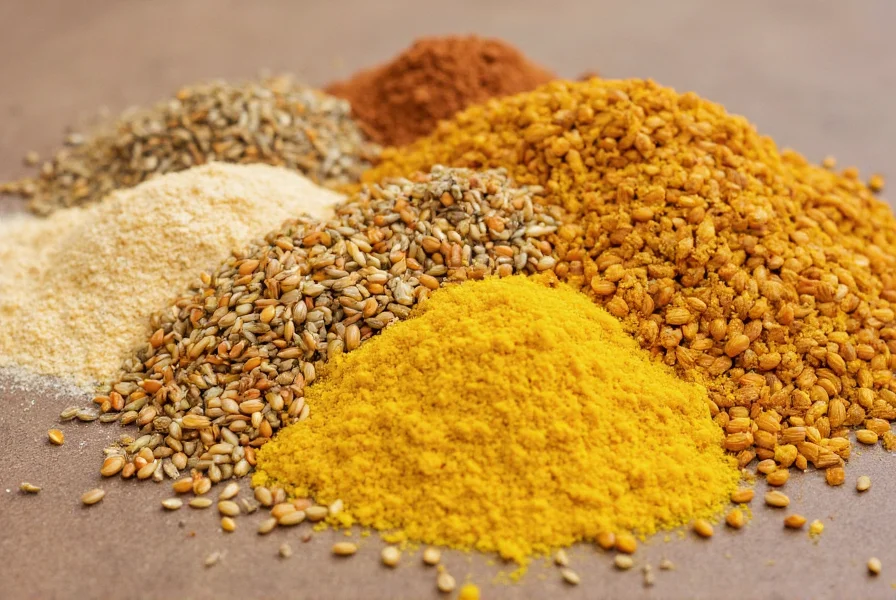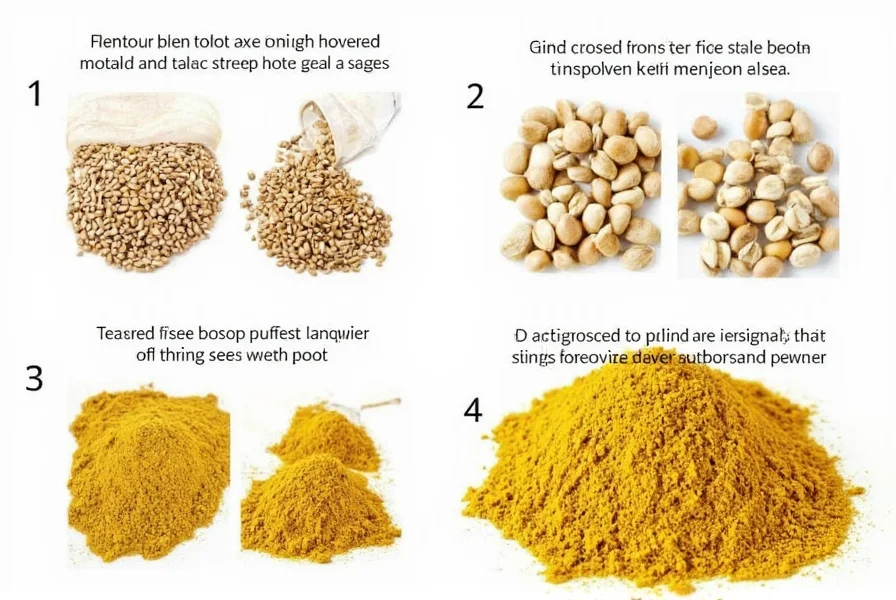When you're in the middle of cooking and realize you're out of dry mustard, knowing reliable substitutes can save your recipe. Dry mustard powder provides that distinctive tangy flavor and acts as an emulsifier in dressings and sauces. Understanding what makes an effective substitute requires knowing how dry mustard functions in different culinary applications.
Why Dry Mustard Matters in Cooking
Dry mustard powder isn't just about heat—it contains myrosinase enzymes that create that signature pungent flavor when mixed with liquid. Unlike prepared mustard, which has vinegar that stabilizes the flavor, dry mustard activates when wet, making timing crucial in recipes. This explains why some substitutes work better than others depending on your specific cooking application.

Top Dry Mustard Substitutes Ranked by Effectiveness
| Substitute | Conversion Ratio | Best For | Limitations |
|---|---|---|---|
| Prepared mustard | 1 tbsp = 1 tsp dry mustard | Dressings, marinades, wet applications | Adds liquid; reduce other liquids by 1 tsp |
| Mustard seeds (crushed) | 1.5 tsp = 1 tsp dry mustard | Dry rubs, pickling, baking | Requires grinding; slightly different texture |
| Mustard seed powder | 1:1 ratio | All applications | Less common in pantries |
| Turmeric + vinegar blend | 1/2 tsp turmeric + 1 tsp vinegar = 1 tsp dry mustard | Emergency situations | Lacks authentic mustard flavor complexity |
Substituting Dry Mustard by Recipe Type
For Baking and Dry Applications
When substituting dry mustard in baked goods or dry rubs, mustard seeds provide the closest match. Grind 1.5 teaspoons of yellow mustard seeds per teaspoon of dry mustard required. For immediate use without grinding, mix 1 teaspoon mustard seeds with 1/4 teaspoon water and let sit for 10 minutes to activate enzymes. This dry mustard powder substitute works particularly well in cheese spreads and barbecue rubs where texture matters.
For Dressings and Marinades
Prepared mustard makes the best dry mustard substitute for wet applications. Use 1 tablespoon of prepared yellow mustard for every teaspoon of dry mustard called for, and reduce other liquids in the recipe by 1 teaspoon. For a more sophisticated flavor in vinaigrettes, Dijon mustard works exceptionally well as a dry mustard replacement, providing similar emulsifying properties with added complexity.
Dry mustard substitute measurements for canning
When preserving foods, the antimicrobial properties of mustard become important. For canning recipes requiring dry mustard, use 1.5 teaspoons of freshly crushed mustard seeds per teaspoon of dry mustard. Avoid vinegar-based substitutes here, as they can alter pH levels critical for food safety in home canning projects.
What Doesn't Work as a Dry Mustard Substitute
Many online sources suggest using horseradish or wasabi as substitutes, but these create fundamentally different flavor profiles and chemical reactions. Horseradish lacks the emulsifying properties of mustard and introduces excessive heat. Wasabi changes the color and has a completely different chemical composition. Even "hot dog mustard" often contains additional spices that alter recipes unpredictably.
Creating Your Own Dry Mustard Substitute Blend
For the most reliable dry mustard powder substitute, make this pantry-friendly blend:
- 2 tablespoons yellow mustard seeds
- 1 teaspoon turmeric
- 1/2 teaspoon garlic powder
- 1/4 teaspoon paprika
Grind thoroughly in a spice grinder until powdery. Store in an airtight container for up to 3 months. Use a 1:1 ratio in place of dry mustard. This homemade dry mustard alternative maintains the enzymatic properties while providing consistent flavor.

When Substitution Changes Your Recipe Chemistry
Dry mustard plays a specific role in some recipes beyond flavor—it helps emulsify sauces and affects texture in baked goods. In cheese sauces, the myrosinase enzymes interact with dairy proteins. When substituting, add the prepared mustard substitute later in the cooking process to preserve these properties. For baking applications where dry mustard helps with rise (like in some breads), the seed-to-powder conversion works best as it maintains the dry ingredient balance.
Frequently Asked Questions
Can I use regular mustard instead of dry mustard in mac and cheese?
Yes, use 1 tablespoon of prepared yellow mustard for every teaspoon of dry mustard required. Add it when combining your cheese sauce ingredients, not with the dry ingredients, to maintain proper emulsification. Reduce milk by 1 teaspoon to account for the added liquid.
What's the best dry mustard substitute for canning pickles?
Crushed yellow mustard seeds make the best dry mustard substitute for canning. Use 1.5 teaspoons of freshly crushed seeds per teaspoon of dry mustard required. Avoid vinegar-based substitutes as they can alter the critical pH balance needed for safe canning.
How do I substitute dry mustard in a dry rub recipe?
For dry rubs, use 1.5 teaspoons of coarsely ground mustard seeds per teaspoon of dry mustard. If you don't have whole seeds, create a blend of 1/2 teaspoon turmeric plus 1/4 teaspoon vinegar mixed with other dry spices, but add this mixture slightly later in the preparation process to prevent clumping.
Does the type of mustard seed matter for substitution?
Yes, yellow mustard seeds provide the closest flavor profile to standard dry mustard powder. Brown or black mustard seeds are significantly hotter and more pungent—use only 1 teaspoon of brown seeds per teaspoon of dry mustard required, and consider reducing other spicy elements in your recipe.










 浙公网安备
33010002000092号
浙公网安备
33010002000092号 浙B2-20120091-4
浙B2-20120091-4